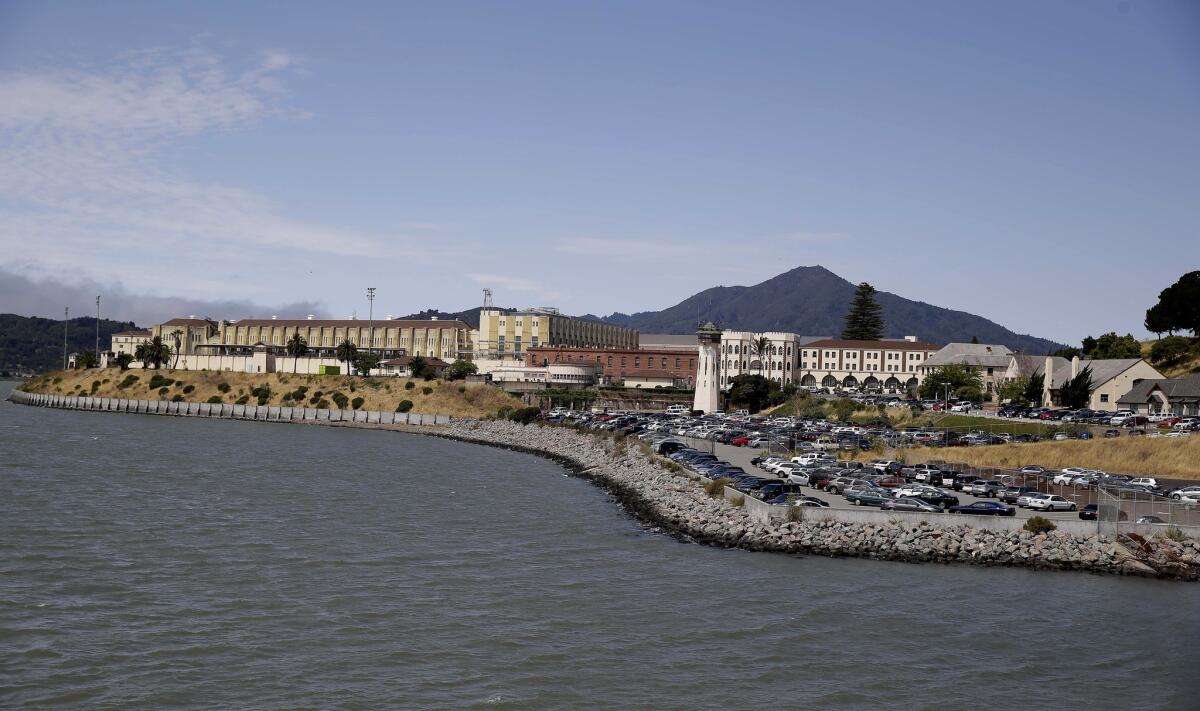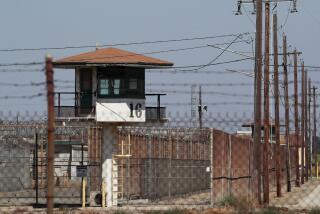Parts of San Quentin prison under quarantine as a precaution

SACRAMENTO — Inmates in two cellblocks at San Quentin State Prison are quarantined from the rest of the Bay Area prison, but California prison officials say there is no indication that the prison is dealing with the coronavirus.
Dana Simas, a spokeswoman for the California Department of Corrections and Rehabilitation, on Sunday confirmed the quarantine. She also outlined in an email the testing protocol for inmates: “If a test for flu comes back negative we will test for COVID-19.”
Internal memos at the Bay Area prison point out that it may take three to four days to find out if there are any coronavirus cases.
Late Saturday, an inmate advocate tweeted that two prison buildings were under lockdown. “Pray/send energy for everyone,” wrote Adnan Khan, co-executive director of Re:Store Justice and a former San Quentin inmate. He followed up with a post clarifying there are no confirmed COVID-19 cases, but there are “flu-like symptoms.”
Simas said “there’s no indication that there was a potential COVID-19 exposure or that this is COVID-19 related.”
“If we determine a potential exposure or the medical team believe it to be related,” she said, “it will be something about which we will immediately update the media.”
Prison medical services in California are run by a federal receiver and the California Department of Corrections and Rehabilitation. The corrections department has not yet provided copies of protocols to deal with the coronavirus within the prisons, requested three weeks ago by The Times under the California Public Records Act.
But an internal policy memo obtained by The Times instructs prison medical staff to first test any inmates who show signs of illness for the flu. Only if those tests come back negative are the sick inmates to be tested for the coronavirus that causes COVID-19.
The memo notes that a private diagnostic lab may not be able to return the results of those tests for three to four days because of anticipated demand.
Amid increasing community spread of the virus in California and concerns raised by epidemiologists and inmate advocates of the heightened risk the virus poses to inmates with little ability to isolate or sanitize, state prison officials began publicizing measures to limit potential exposure to the virus last week.
Routine visitations at all prisons were halted Wednesday, and Sunday the agency announced it was also halting overnight family visits. The prison system said inmates have adequate access to hospital-grade disinfectants to clean their cells.
Beginning Friday, the prison system began screening workers and volunteers at prison entrances, asking questions about possible exposure to the coronavirus.
The policy memo instructs prison administrators to gather the needed equipment to begin taking the temperatures of all those entering the state’s mostly time-worn, crowded prisons. As of Wednesday there were more than 117,000 inmates in state-owned prisons and camps, and some 4,200 in private lockups.
The massive granite-block San Quentin prison, built in 1852 on a Marin County bluff overlooking the bay, is the oldest prison in the state. It houses more than 4,000 inmates, including all of the state’s male death row population. It was designed to hold a little over 3,000.
The corrections department Sunday also announced it is closing the doors of parole hearings, permitting no observers and requiring that victims and prosecutors who wish to weigh in on an inmate’s release do so by telephone or video conference.
The parole board “appreciates that these are not ideal arrangements,” the statement said, but “the Department is obligated to limit the number of people at parole consideration hearings, minimize travel via common carriers and lodging, and adhere to social distancing recommendations as much as possible.”
For now, the prisons remain open to volunteers, but Rebecca Weiker, whose Southern California prison outreach work includes Re:Store Justice, said she and other volunteers she spoke to over the weekend have decided to stay away.
“We’re being respectful … not bringing something in,” Weiker said. “It’s the responsible thing to do.”
One of the quarantined San Quentin cellblocks houses inmates who have just transferred into the prison system. The other quarantined prisoners are in West Block, said Khan, who spoke to inmates Sunday by phone. Both buildings house about 900 inmates each, he said.
Khan said he spoke to an elderly inmate not in the quarantined section, and he was not concerned. “He’s being cautious … [but] he’s cleaned anyways.”
Khan noted that it is common practice for San Quentin inmates to not report to prison health services when they are sick, because a bout of flu typically would mean being transferred to the spartan solitary confinement wing, where few possessions are allowed and there is no access to a phone. “Comfort is very important” to inmates, he said. “To isolate yourself creates even more mental health concerns.”
More to Read
Sign up for Essential California
The most important California stories and recommendations in your inbox every morning.
You may occasionally receive promotional content from the Los Angeles Times.










